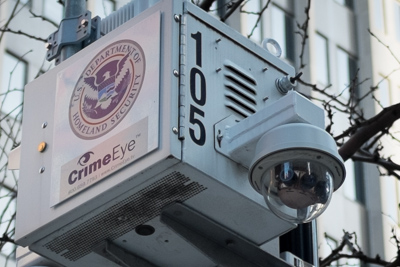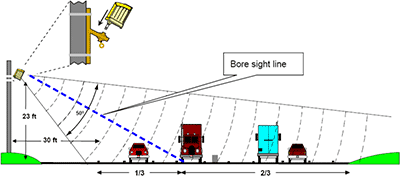Article: Unseen Sensors
I recently had a piece published on frog’s Designmind, kicking off a new series on “Sensing”. In Unseen Sensors (archived here), I explore New York City’s sensors: what they are and what they do, who made them and who put them there.

clockwise from top-left: a microwave traffic sensor, a private security camera, a weather station of unknown ownership, and a traffic camera
Researching the piece started out onto the streets of New York, pointing my camera at devices designed to keep an eye on suspicious behavior (ahem) on the one hand, and entirely anonymous plastic cases attached to apartment buildings on the other – not to mention the many that were pointed at the City’s roadways, and didn’t care about this camera-toting pedestrian in the slightest. In the process I have become unusually adept at spotting beige boxes, otherwise unnoticed cabling, and protruding antennas, as well as deciphering manufacturer names and model numbers from tiny barcoded labels placed far out of reach.
Some were a little easier to identify: I won’t lie, I was a little nervous as I composed the shots of the cameras prominently marked NYPD and Department of Homeland Security.

It then took me deeper than I’d like to admit into technical spec sheets and press releases from nyc.gov, enthusiastic startups, since-bankrupt and renamed companies, and military mega-contractors alike. Not to mention PDFs of sales brochures with catchy titles like “A Family of Products – A World of Solutions”, as I tried to wrap my head around products (sorry, “solutions“) that were never meant to be understood by anybody other than a city procurement officer or engineer.

above: diagram from the RTMS G4 manual, from Image Sensing Systems
The article itself was heavily influenced by James Bridle’s great work looking at CCTV cameras and systems. His piece “How Britain exported next-generation surveillance” on Medium is a fascinating read, and well worth the time to take in properly. His description of his investigation into this ubiquitous element of Britain’s streets as “giving us something to point at when we talk about large invisible systems” resonated deeply with me.
Likewise, Adam Greenfield’s work, especially on Public Objects, was never far from my mind as I was writing, as were Dan Hill’s concept of “Dark Matter” and Kate Crawford‘s thoughts around how networked data becomes part of our understanding of power and democracy.
Books such as Kate Ascher’s “The Works: Anatomy of a City” and Ed Sobey’s “Field Guide to Roadside Technology” were also sources for inspiration, if not always fruitful sources of information on some of these newer (and less widespread) additions to our city.
And I’d be remiss not to thank editors Adam Aston and Amy MacMillan, who both helped hugely improve the piece and get it out of the door.

As I end the article (now offline; archived here)- “Once you start noticing them, you’ll see many more.” I can no longer walk down a street – in New York or elsewhere – without pausing to glance a little more closely at a strange and previously unseen sensor, hiding in plain sight, peeking out at us from the built environment.
I hope others do the same.
← Back to the latest posts
You’re currently reading “Article: Unseen Sensors,” a post by Mayo Nissen
- Published:
- May 12th, 2014
- Filed under:
- newyork, observations, technology, writing

Comments are closed
Comments are currently closed on this entry.